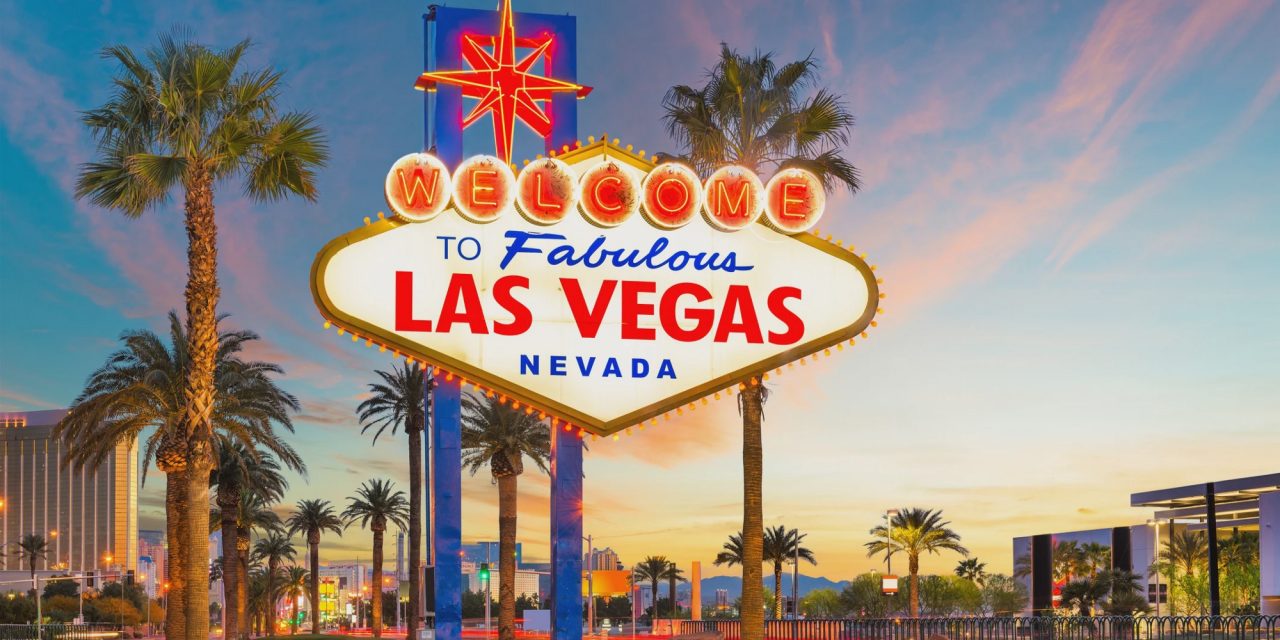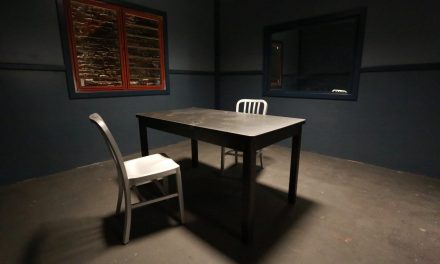By Moe Khojasteh Lakelayeh
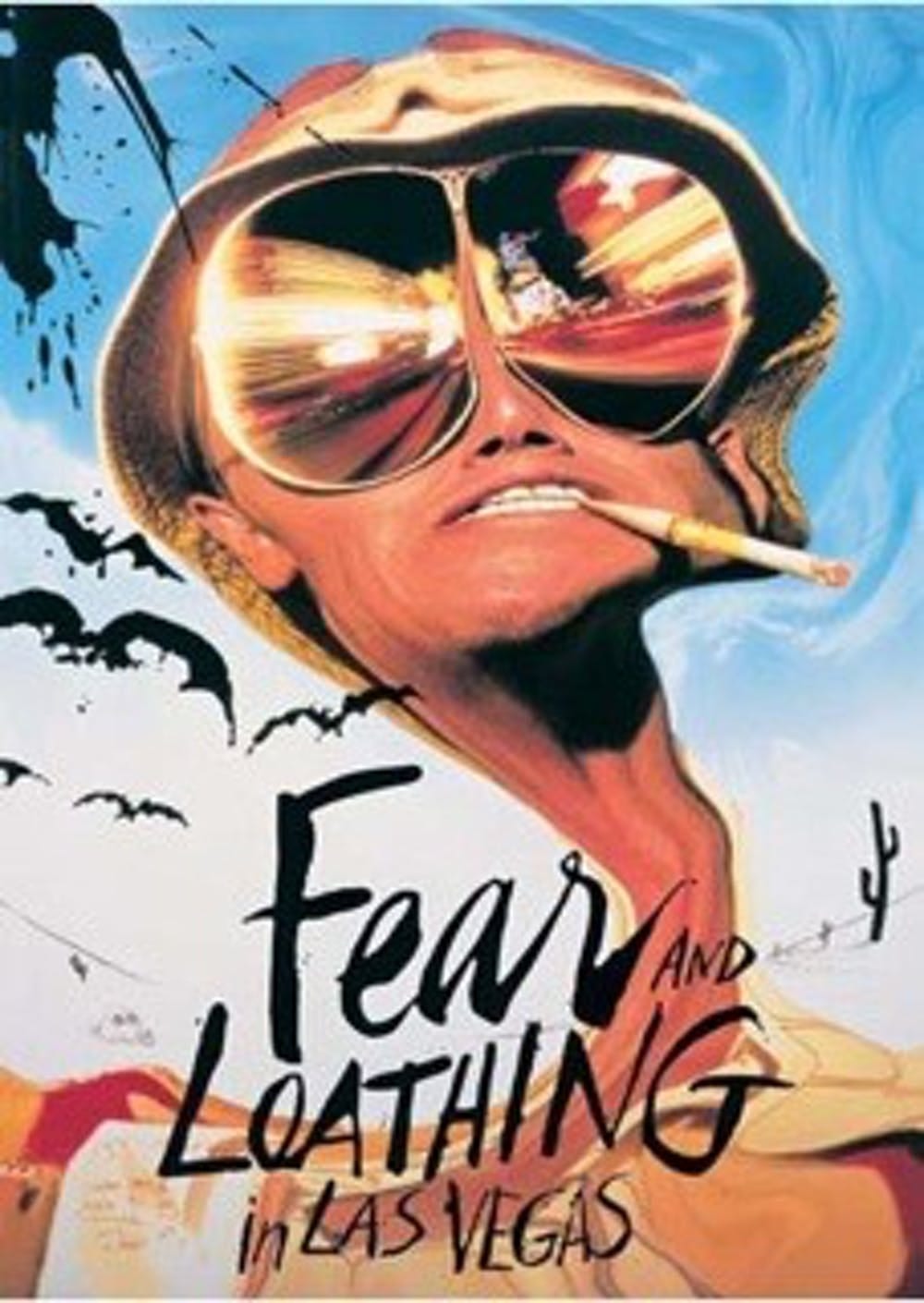
Fear and Loathing in Las Vegas is an American movie directed by Terry Gilliam in 1998 based on a novel with the same name written by Hunter S. Thompson in 1971. The movie was not financially successful after its release in 1999; however, it succeeded to be a highly applauded and critically acclaimed cult film. The initial striking notion is based on the sensitive and highly debated issues of narcotics and illegal psychoactive drugs that seem to have shaped the thematic structure of the work; however, as the movie reveals the underlying and inner ideas, the focus on issues such as narcotics, their alleged deleteriousness and the pressure to end the prohibition imposed on them gradually shifts towards political events of the late 60s. Furthermore, the overflowing sceneries depicting narcotics can be considered an ancillary motif; since, they are implemented to prepare a framework to facilitate the instances of anachronism and to make provision for the sporadic time-shifts throughout the references to the tumultuous events of the time setting. Also, the said motif can help to intimate the inexorable influence of the 60’s turbulent events as well as the impact of their disintegration on the minds of social groups who constructed their objective sense of identity by contributing to the unrest.

Hunter S. Thompson
The journalistic style of narrating comes from Hunter S. Thompson’s actual career as a journalist for he has established a genre in journalism known as Gonzo Journalism, a style of reporting with the reporter-journalist present at the heart of the event. Unlike the traditional journalism which has objectivity as its inseparable attribute, Gonzo Journalism is suggestive and subjective (Othitis). The movie creates frenzied images which are amalgamated with reality; the line between the illusion and reality is blurred. In addition, there are flash backs/forwards which contribute to the fragmentation of the plot and demonstrate a distorted stream of consciousness; also, they falsify our notions of time and place.
The plot narrates the experiences of Raul Duke as a journalist who is sent to Las Vegas to cover a sport event and his attorney, Dr. Gonzo, accompanies him through his assignment. They decide to equip themselves with a considerable amount of narcotics for their journey. As observable, the plot is so terse and overshadowed by expressionistic portrayals of hallucinations through which the themes and topics are spread. The movie discusses the 60’s and early 70’s countercultural movements with a special attention to their extinctions, and it scrutinizes the effects of the dissolution of the 60’s and early 70’s quests and events on the mental states of the people who were formerly a part of these movements.
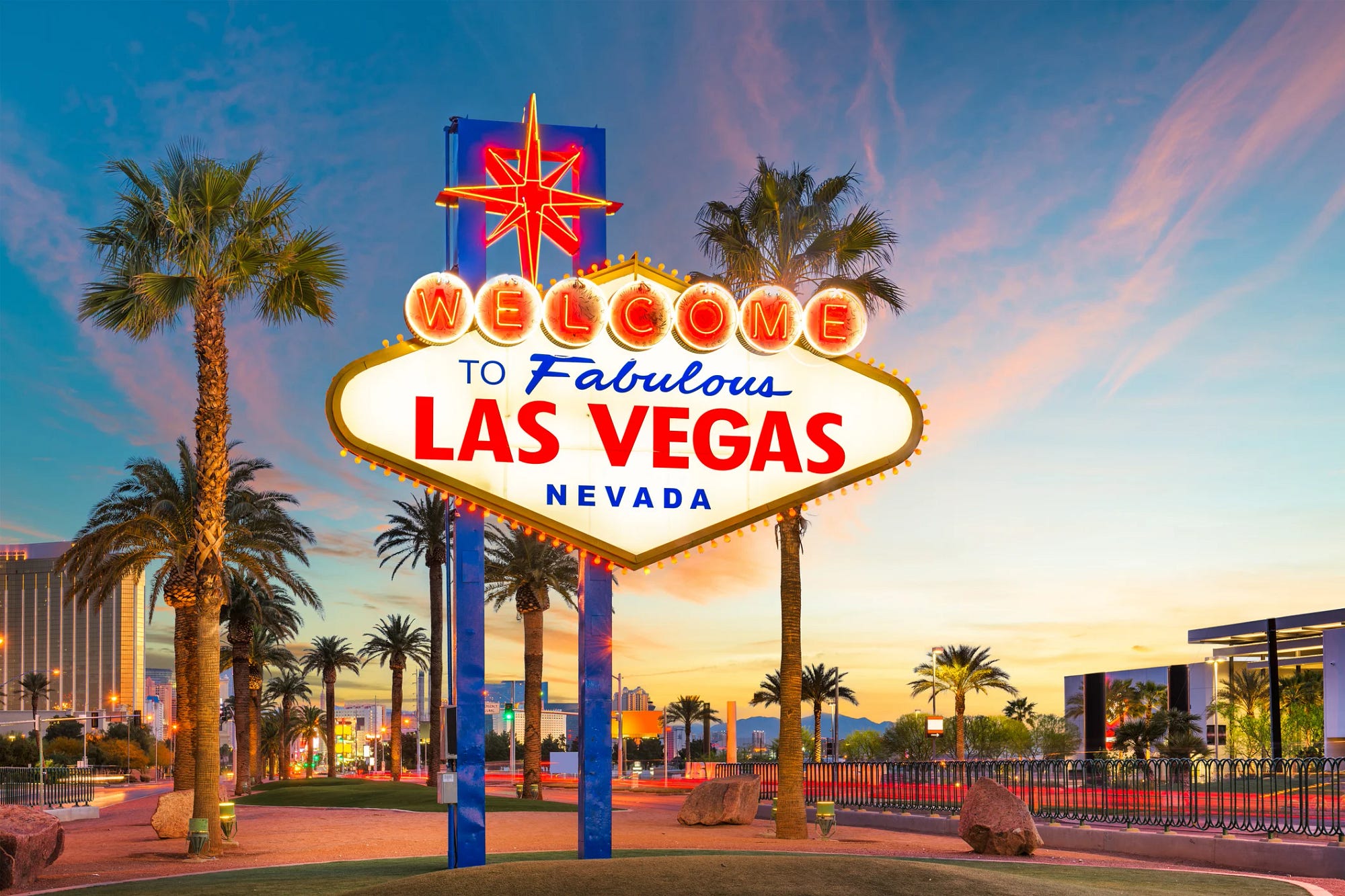
This paper will show how the emergence and dissolution of the countercultural movements, as the social and cultural context, can help to analyze the mental states and dispositions of Duke and Gonzo and to have a better knowledge of the reasons underlying their audacious reproach to the notion of the American Dream and their persistent feelings of failure, guilt and alienation.
The presentation firstly abstracts the unprecedented events of the American society in the sixties and early seventies as the context. Afterwards, this essay will discuss the reasons which urge the main characters towards drug abuse and instigate their inextricable tendency to self-destruction. Moreover, it will be analyzed why the main characters are associated with a sense of confusion that is conducive to their display of emasculation and estrangement. The next section will place the behavior of the main characters into the context of the 60’s subversive anti-authoritarianism. Subsequently, the re-conceptualization of the American Dream and the work’s derisive portrait of this concept will be analyzed; also, the standpoint of the main characters on the issue of the American Dream will be presented. Finally, some intertextual elements and the references to the Vietnam War will be discussed. Additionally, this presentation will appraise how the main characters conceive this war, and how they respond to it.
The United States underwent many radical and vigorous quests for change in the sixties. The detested Vietnam War as the joint concern of nearly all countercultural movements provoked numerous protests, either peaceful or violent. The United States experienced almost three hundred riots in the years between 1965 and 1968 (McKay). The civil-rights movement focused on the equality of all American citizens and demanded desegregation. Certain protests such as Kent State University’s anti-war protest were violently suppressed by the authorities (McKay). Many movements and quests for change such as Free Speech Movement were initiated by university students (McKay). Younger generations of the United States started to embrace the ideas which verge on the capability of the individual to govern him/herself without being dependent on the external regulating systems such as law enforcement agencies. It is of verity that the mentioned institutions are frequently excoriated by acrid suggestions during the movie; in fact, these thoughts can allude to the basic ideas of anarchism. Women Liberation Movement originated in the sixties; however, rather decline, it gained strength in the seventies. The typical image of the woman homemaker was challenged, and the movement attempted to eliminate the gender-based stereotypes (McKay). Hippie culture emerged in the sixties, and it is argued that the hippie culture contained certain anti-authoritarian inclinations; however, this subculture was marked by the optimistic ideas which lack sophistication or are considered idyllic. Another remarkable feature of the 60’s counterculture is the development and appearance of Rock’n Roll styles, now enriched by distinctive lyrical features. Jimi Hendrix and Bob Dylan exemplify the spirit of this generation in an elaborate manner. Jimi Hendrix’s style can be considered the musical equivalent of psychedelic arts. Bob Dylan’s music refined the mainstream Rock’n Roll lyrics as he bestowed certain themes such as social and political conflicts and protests upon rock music. It is worthy of note that the movie’s progress, plot and the inner state of the characters are illustrated and attended by eclectically chosen pieces from the said styles of rock music.

Martin Luther King Jr.
Another countercultural phenomenon that appeared in the sixties is the modification and re-conceptualization of the American dream, as non-conformist groups of Americans found new pursuits of happiness different from the specific material success which was instilled by the American mass media and inculcated by the capitalist system. In addition, the discriminating and excluding tendency of the American Dream was called into question, for the traditional definition of the American Dream repudiates ethnic minorities’ rights of pursuing the happiness and it prevents women and non-heterosexual groups from developing quests for equality and for civil rights (Laitinen). Therefore, the 1960’s protests against racial segregation, patriarchy, xenophobia and homophobia can be considered the strains to revise the intractable notion of the American Dream.
The earlier years of the 70s can be considered the time which many quests for social equalities, anti-war movements, anti-racism conflicts, civic riots and anti-colonial protests faced their decline, lost their vigor or deteriorated. Consequently, people who had defined their identity and ideals by attachment to these campaigns lost their voice, became disaffected and deserted. We are informed in the beginning of the narrative that characters are “hiding from the brutish realities of this foul year of our Lord, 1971” (5:44). Self-destruction, drug abuse, solitary lifestyle, devotion to Eastern cultures’ asceticism; or on the contrary, hedonism became the means of consolation for some who were left back.
It can be assumed that the main characters hold an anti-authoritarian belief, and they incessantly show their contempt for the representatives of law. For instance, on the occasion that Duke tries to get rid of the illusionary bats that are flying around the car, he calls them “pigs” (1:54). Anti-establishment ideas and anti-authoritarianism gave birth to the new forms of anarchism that were promoted in the 60s and early 70s particularly by the subcultures with which the main characters sympathize. On another occasion, Duke describes the representatives of law as “the outback Nazi law enforcement agency that will run us down like dogs” (4:11). This can be assumed as another proof which shows Duke’s rejection of submission to ingrained social institutions. For another example, there is a direct reference to the Kent State University events when Duke hears some officers sharing their experiences of brutalizing students with their anti-riot equipment. The exchanged dialogues between officers cause Duke to implicitly show his anguish and loathsome; further, it fills him with fear and paranoia.
Another topic that is broadly discussed, mocked and re-conceptualized is the notion of the American Dream. The novel has a direct reference to the American Dream in its title: Fear and Loathing in Las Vegas: A Savage Journey to the Heart of the American Dream. The American Dream found new definitions in the sixties (Laitinen 23–8). In this decade, various types of subcultures appeared, and the convergence of the American society began to wane. Moreover, the value system which had inured masses to confine human reproduction between the boundaries of the rigid and consecrated family structure came under question. The image of safety and security of a White middle class family was criticized or satirized by the newly emerging groups. The various forms of counterculture emerged in the sixties, introduced alternatives for happiness far from traditional material success and aloof from Christian rules of conduct (Laitinen 23–8). For example, while holding an American flag on his shoulders, Duke says: “We ate some mescaline and went swimming. Our trip was different, a classic affirmation of everything right and true in the national character” (9:54). It is critical to note the key words “different” and “national”, as he emphasizes a different yet American “pursuit of happiness”. Another reference to the modification of the American Dream can be observed in the section that Duke pours the drug on an American flag in order to use it; in fact, this is an allusion to the new emerging subcultures that attempt to voice their anomalous definition for the concept of nationalism that diverges from the orthodoxies of the older generations.
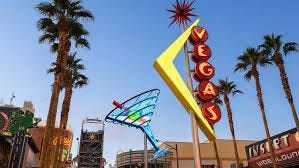
The city of Las Vegas is acutely utilized as a suggestive and critical setting, a city whose cultural diversity, social context and economic resources can expedite the work’s messages concerning capitalism. The setting indicates a realm where people have equal opportunity to prosper (gambling) which resembles the fundamental concerns which eventually determined the foundational values of the United States. On an occasion, the main characters decide to explore The Bazooka Casino Circus. This place is described by Duke: “we came here to find the American Dream, and we are right at the vortex…” (34:15). Rambling around the casino-circus, everyone offers “success” to Duke and Gonzo. There are anonymous voices all over the place offering people that “everyone is a winner”. The main characters are running confusedly into the howling atmosphere of the circus. This section is another denunciation of the American socio-economic structure. It is not difficult to observe Thompson’s perception of the American Dream as he flagrantly attributes absurdity and ludicrousness to this pursuit by establishing this analogy. It can be presumed that the Bazooka casino-circus evokes a gaudy picture of the values of a capitalist system. The parallelism, ironic and redolent of a caricature, between a chaotic casino-circus and the concept of the American Dream, is the factor that accounts for Duke and Gonzo’s eschewal of assimilation into the dominant value system. It is possible to interpret that Duke’s discernment of the quixotic nature of the “success” makes him a pessimistic non-believer trying to seek consolation and joy in the memories of the defunct liberal quests and protests.
Moreover, Duke incurs isolation and unintelligibility to the American mainstream by disparaging the liberal platitudes; for example, he rebukes the canard of “true grit” while he says: “[Our trip] … It was a physical salute to the fantastic possibilities of life in this country-but only for those with true grit. My attorney understands this concept despite his racial handicap” (10:06). As it is observable, his caustic tone reveals the prejudicious aspect of the concept of “True Grit” and suggests that it rules out certain groups of people based on its inherent structure.
The implementation or aggrandizement of the traditional notion of the American Dream can result in the promulgation of the consumerism culture. The act of venerating the commercialism and cultivating the consumers’ insatiable appetite to purchase the ostensibly necessary products are integral to the hegemony of capitalism. To explain, the system needs to cherish the penchant for lavish expenditure on frivolous products and to entice the consumers to keep abreast of the most recent technological advancements applied to manufactures; hereby, it raises the rapacity for more consumption. This cycle is depicted both in the narrative and the adaptation as reprehension of the traditional notion of the American Dream extolled in the 50s and 60s. For instance, there is a scene that depicts Dr. Gonzo being intoxicated by LSD in a bathtub listening to a song written by the rock band Jefferson Airplane. The lyric narrates:
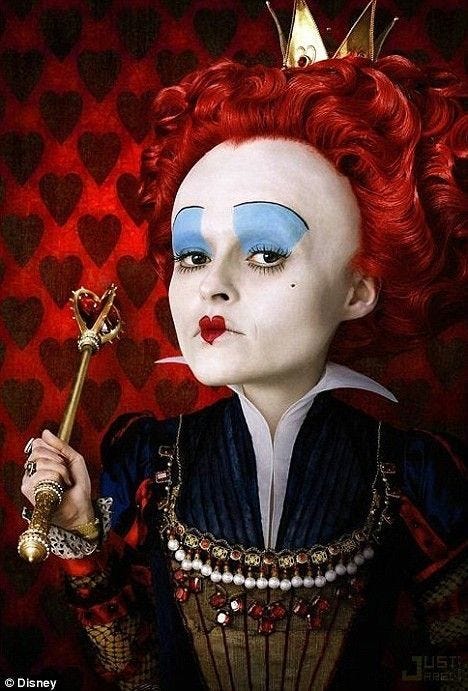
When logic and proportion have fallen sloppy dead,
And the white knight is talking backwards,
And the red queen’s off with her head,
Remember what the dormouse said,
Feed your head, feed your head
This mise en scene is of utmost significance and can be highly suggestive. For instance, the endless cycle of hunger for drugs which leaves nothing but more appetite can be detected and hence the issue of self-destruction is put forth. However, the neighboring scenes make this portion of the film multifaceted since the juxtaposition of the images contribute to the thematic structure of the whole work by connecting the notions of unquenchable hunger, absurdity of pursuit, failure and self-destruction. Presumably, this song alludes to the idea of the systemically planted and fostered avidity for material success. As it can be observed, the voracity leads the “rabbit” to eat its own head. Furthermore, the self-destruction of both Gonzo and the “rabbit” is resonant with Duke’s observation of people chasing the “American Dream” in the neighboring mise en scenes. The connected scenes are attended by the voice-over of Duke that explicitly rebukes the hollowness of the pursuit. The adjacent sceneries establish an evocative analogy between the American Dream and the way that a manipulated consciousness is entangled in a mind-numbing yet pernicious cycle.
While commenting on Gonzo’s inebriated state, Duke refers to him as “Just another ugly refugee from the love generation” (50:13). “The love generation” is an allusion to the period when the quests were at their apogee and the victory seemed accessible; however, by this Duke refers to the divergence of opinions and vitiation of the movement which caused the duress and displacement of the activists; hence, Gonzo is called a “refugee”.
The decisive theme distinguished above is sustained in other sections of the film as well. For instance, Duke’s voice-over, which is constantly introspective and interrogative, impugns the people allured by the “vision of the big winner” who are gambling in a casino. He states the line below while we hear the sounds of slot machines clicking and ringing in the background: “Who are these people? These faces? Where do they come from? … There are a hell of lot of them at 4:30 on a Sunday morning still humping the American Dream” (42:30). The movie indicates that the American Dream resembles the act of gambling for they both symbolize the strain to attain something that is not actually achievable (Thompson 55). Therefore, gambling, desire for material success and consumerism are the items that are placed in a harmony with the quest for the American Dream.
Further, there is a mise en scene which shows that Duke tries his hand in gambling and has no luck; he says: “learn to enjoy losing” (43:45). Having the context in mind, one can relate this quote to the suppressed quests for peace, equality and freedom. Additionally, this gloomy quote can represent the alienation that an iconoclast can incur by being surrounded by the people whose ideas and lifestyles show total submission and conformity to the dominant socio/cultural codes.
The sport event, which Duke is sent to make a story about, is represented as a trifling task and more like a distraction from and impediment on the way of the journalistic responsibility to enlighten and apprise the populace of the critical happenings. The deterioration of countercultural movements gives rise to the main characters’ cultural and social alienation. Duke and Gonzo are the characters whose words and thoughts criticize the rigors of the American Dream. Duke tends to re-conceptualize the term; the main characters try to find an alternative pursuit of happiness, yet they are proud to be American. Duke and Gonzo calumniate the authorities’ incapability to respond to the new emerging needs; a weakness which the system camouflages by designating other irrational and often violent expedients. But the characters’ inner thoughts, emotions, and political inclinations are demonstrated by irony, anti-thesis and symbolism; in other words, they can be conceived only when their caustic and devious tone is distinguished, and they are placed in the proper context. The main characters’ attitudes can be considered an escape from the brutal reality which began to rule over their lives and ruined their expectations, now they have to cope with the fact that they failed.

“There was madness in any direction, at any hour, you could strike sparks anywhere, there was a fantastic universal sense that whatever we were doing was right, that we were winning and that I think was the handle… That sense of inevitable victory over the forces of old and evil, not in any mean or military sense, we didn’t need that, our energy would simply prevail, we had all the momentum, we were riding the crest of a high and beautiful wave, so now, less than five years later you can go up a steep hill in Las Vegas and look west, and with the right kind of eyes you can almost see the high water mark, that the place the wave finally broke and rolled back” (Thompson).
WORKS CITED
Gilliam, Terry, dir. Fear and Loathing in Las Vegas. Perf. Johnny Depp, Benicio Del Toro.Universal. 2002. DVD.
Laitinen, Meri. Relocating the American Dream. helda.helsinki.fi. 2009.Web. 12 Oct. 2012.
McKay, George. “The social and (counter)cultural 1960s in the USA, transatlantically.” Academia. Academia, n.d. Web. 29 Oct. 2012.
Othitis, Christine. “The Beginnings and Concept of Gonzo Journalism.” Gonzo. Gonzo, n.d. Web. 15 Oct. 2012.
Tobias, Scott. “The New Cult Canon: Fear And Loathing In Las Vegas.” Avclub.
Avclub, n.d. Web. 19 Oct. 2012.
Thompson, Hunter S. Fear and Loathing in Las Vegas:
A Savage Journey to the Heart of the American Dream. London: Flamingo, 1972. Print.

